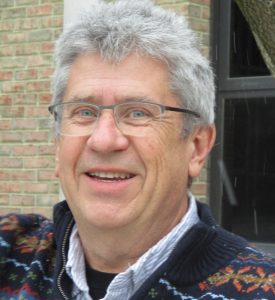Special Collection: It Still Gets Cold
(Why does it get cold in a warming world?)
OpenClimate Playlists on YouTube
Monthly Column: Climate Blue (Searchable table of Climate Blue)
Complex Problems with No Known Solutions
In 1979, I was at the Naval Research Laboratory in Washington, DC finishing my doctorate. I was in the Plasma Physics Division, where I was introduced to computer simulation – numerical modeling. In 1982, I started a postdoctoral fellowship at NASA’s Goddard Space Flight Center; I stayed with NASA until 2005. At NASA, all of the scientists performance plans said we worked on “complex problems with no known solutions.” Looking back, that is what we did, but we did not really have a set algorithm for how to do that.
In 2005, I became a professor at the University of Michigan in Ann Arbor. I don’t know what I said, but three students from the business and policy schools asked me to start a course on climate change. I realized, first, climate change was another complex problem with no known solution. Second, if we could develop a practice for confronting these complex problems, people could be effective fifteen years earlier in their careers.
Considering how fast the climate is changing, fifteen years is a long time.
In my time at the University of Michigan, I have helped create several courses in the spirit of “problem solving.” We have a small Masters of Engineering program called Applied Climate. Through the Great Lakes Integrated Sciences and Assessments Center, I and my colleagues have worked on many practitioner-inspired climate problems. We have studied the usability of climate knowledge.
This website is, always, a work in progress. It aspires to be a collection of material from both trying to do and trying to teach methods of complex problem solving.
Complex problems?
I mean problems that have many stakeholders and many competing interests. They change depending on who poses the problem, when it is posed, and where it comes from. My particular goal is to “represent” climate change in the deliberations of these problems. I want my students to recognize where climate change sits in relation to all of the other moving parts. They need to understand that it will be a rare problem in which climate change is compelling enough to motivate immediate and lasting actions. To address climate change will required being ever present and persistent.
At NASA I was a manager, and I won awards for my management. I never set out to be a head of organizations, but that is where I ended up. I was good at it, and compared to many of my scientific colleagues, I both valued and studied organizations and management. I always worked at the intersections between fields. I connected fields into systems. I translated across fields; I tried to synthesize and balance knowledge.
In 2007, I was introduced at a meeting as a “generalist.” I liked it better than dilettante. I realized that the generalist was needed to bring the specialists together in order to synthesize knowledge to solve problems. As with everything in my career, I knew I was not the first to figure that out, nor the first to write about it. I did decide that people who can synthesize knowledge to solve problems were too rare. We emphasize specialization. For students getting their doctorates, we emphasize original, independent research, which is, in some ways, the antithesis of problem solving. My goal is to train people to be literate in climate science, and who can work confidently across fields to make a lasting difference to the world.
ABOUT
